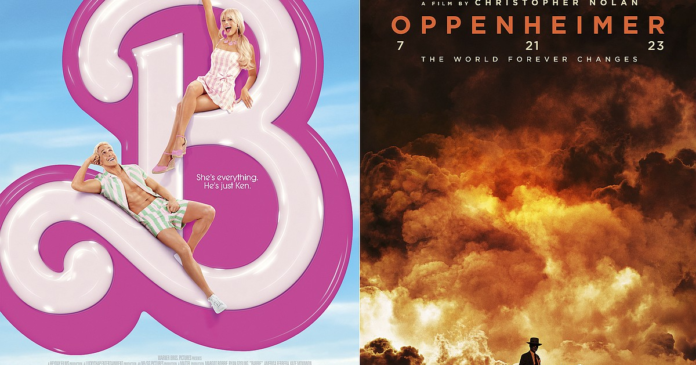Good movies obviously don’t always achieve blockbuster status at the box office. If they did, standouts like “Are You There God? It’s Me, Margaret.” “Asteroid City” and “Past Lives” would be sitting next to “Spider-Man: Across the Spider-Verse” as the top-grossing movies of the year.
“Barbenheimer,” or “Barbie” and “Oppenheimer,” probably would have made decent money regardless of critical and audience reception. After all, one is a decades-spanning toy sensation and the other is the latest from one of Hollywood’s few bankable directors.
A huge marketing campaign certainly helped matters too, as well as the rival studios’ embrace of the viral “Barbenheimer” challenge (spend five hours at the movie theater watching two completely different kinds of movies).
Still, the box office wouldn’t have soared so high without a key factor: Both “Barbie” and “Oppenheimer” are good movies.
The “Oppenheimer” success is a staggering one given its subject matter. A three-hour, R-rated biopic usually needs weeks of audience word of mouth to gross the amount “Oppenheimer” made in a single weekend.
“Oppenheimer” attracted people who don’t go to the movies very often (basically anyone over the age of 30) and, combined with the monster box office made by the independently-released “Sound of Freedom,” there is now proof in this post-COVID universe that more people will go to movies if there’s awareness for the type of movies they actually want to see.
The “Barbie” movie is something special all its own. The brand obviously caters to kids, but by hiring “Lady Bird” and “Little Women” filmmaker Greta Gerwig to make the movie, “Barbie” morphed into a movie for all types of audiences, including those who wouldn’t be caught dead at a “toy movie.”
Give toy giant Mattel credit for allowing Gerwig, co-writer Noah Baumbach and producer/star Margot Robbie to make a movie that both celebrates the most idealistic aspects of the Barbie brand without ignoring its cloudy cultural reputation. Even in a world where Barbie can do anything or be anyone, the “stereotypical” Barbie is tall, blond, skinny and forever smiling. Indeed, the conflict of the film truly begins once the film’s central Barbie (Robbie) breaks from her idyllic routine to contemplate death.
The film reaches its high when a “real world” character played by America Ferrera realizes that even “Stereotypical Barbie” feels the impossible pressures of being a woman.
Though it tackles heavy thematic ideas, Gerwig’s “Barbie” is consistently hysterical, especially in how it utilizes Ken (Ryan Gosling at the peak of his comedic powers) and his realization that the world outside of Barbie is, well, much more favorable to men than he’s previously led to believe. It’s not long before he’s singing Matchbox Twenty’s “Push” and trying to explain “The Godfather” to his “babe.” As funny as it is, Gerwig doesn’t dismiss Ken as a throwaway joke, and the movie ensures that the men of “Barbie” aren’t shackled by broad depictions of toxic masculinity.
All the while, “Barbie” is also stuffed with references to toys and brand lore spanning decades, to the point where the two kids I took to the movie enjoyed the story and worldbuilding even though they didn’t understand why their dad was laughing about a character’s takedown of Zack Snyder’s “Justice League.”
Yes, “Barbie” made a bunch of money. Yes, it’s based on a toy peddled on millions of kids that will lead to many more millions in sales. But it’s also a miracle of a movie — a celebration of a cultural phenomenon that acknowledges, satirizes and recontextualizes all the thorny moral complications that come with such a satiated societal reach. Even Disney, a company that has had great success lampooning its own history, has never gone as delightfully radical as “Barbie.”
All hail good movies making money. It means there’s a fighting chance Hollywood will keep trying their best to entertain us.
• • •
Tyler Wilson can be reached at twilson@cdapress.com.


